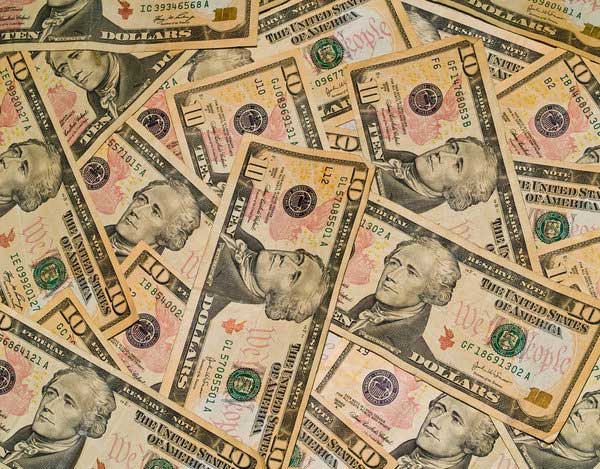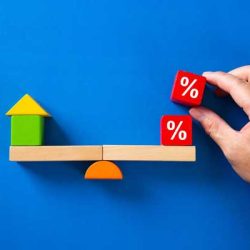The next economic crisis is coming, and if you want to understand the situation and prepare yourself, then this article can be a good start. Today I will summarize a book called Second Chance written by Robert Kiyosaki. Kiyosaki is one of the few people who correctly predicted the 2008 financial crisis. During a crisis, wealth is not destroyed – it is simply transferred from one group to another. If you study history, you can predict the future and position yourself correctly.
This book is divided into three parts: past, present, and future. In the upcoming sections, you will see how history repeats itself again and again, and how governments simply refuse to learn their lessons. Kiyosaki talks about two important terms when reviewing the past: quantitative easing and the gold standard. Let’s start with quantitative easing.
What is Quantitative Easing?
Quantitative easing simply means printing money. You might ask why we don’t just call it printing money. Well, my assumption is that governments are using complex terms so the average person does not understand what is going on. If you get into financial trouble and decide to print money in your basement, you would be arrested. However, the government does a very similar thing but no one says anything.
Governments usually print money when they are in an economic crisis or when the money is needed for critical situations like war. You might ask why printing money is bad. The answer is every time money is printed, the poor and middle class get even poorer and the rich get even richer. Printing money kills the value of money, increases inflation, and taxes regular people’s wealth. Inflation is certainly bad for the average person – it means the money they’ve worked hard to earn is suddenly less valuable.
Printing money is not a new trick. It has been used by governments for centuries, and the scary part is it has always ended with disaster. There is no single evidence in history showing money printing brought prosperity in the long run. It leads to poorer people and bigger government, which is ruled by political forces rather than true economic laws.
Examples of Printing Money Disasters in History
Kiyosaki gives examples from the 20th century, but I will go even further back in history and start with the Roman Empire. When the Roman Empire was faced with war, they started debasing the currency, which also means printing money. Since silver and gold coins were used as money, they started to melt them and add other metals inside to increase the money supply.
They also tried another version of money printing called coin clipping. This is when the tax money was collected, they would clip the edges of the coin and melt the small pieces to create new money. They even used revaluation of the currency. The government took a one coin and pasted a zero next to the one, and suddenly you have a 10 coin! All of these eventually led to hyperinflation, increased taxes, and economic chaos.
After World War I, Germany (the Weimar Republic) also started printing money to pay high war reparations, leading to hyperinflation that brought Hitler to power. If you were a millionaire in Germany in 1918, by the end of 1923 you were completely broke. Let me give you an example to understand how German hyperinflation looked:
Imagine it’s summer and you go out for beers with friends. But instead of ordering one beer, finishing it, and ordering a second, you order two beers at once. You know the second beer will get warm, but you still buy two because by the time you finish the first beer, the money in your pocket will lose its value and you won’t be able to buy the second beer. This is hyperinflation – the disastrous result of printing money.
Romans did it, Chinese did it, English did it, Germans did it, Zimbabwe did it, and it always ended badly. Now America is doing it. Governments never learn from monetary history. As Einstein once said, insanity is doing the same thing over and over and expecting different results.
The End of the Gold Standard
Now that we understand what printing money means, let’s talk about the end of the gold standard in 1971 under the Bretton Woods Agreement. This was an event that accelerated money printing even more.
According to Bretton Woods, the world operated on a gold standard. This meant other currencies were tied to the dollar and the dollar was tied to gold, all at a fixed exchange rate. For every dollar in circulation, there had to be an equal amount of gold stored in the reserve. This way, if a bank or country wanted gold, they could exchange dollars for it.
Theoretically, in the gold standard, the government should not simply print money without increasing its gold reserves. However, in reality America did print money without the reserves, and it came to a point where there were many printed dollars not backed by gold. If people started demanding gold for their dollars, America would not be able to provide it.
The next logical step from America’s perspective was to end the gold standard, which happened in 1971 when President Nixon cut the last tie between gold and the dollar. This meant America could now print money easily, as much as they wanted. Money became a tool in the hands of the government and politicians. Since 1971, America has done three quantitative easings, and each time the situation gets worse.
Printing money is like building a house on sand. You know it will collapse eventually, but instead of stopping and finding a solid foundation, you keep building while finding ways to prevent the house from falling apart. Once you start printing money, it is very hard to stop, as stopping means tearing down the house and starting over – something most politicians don’t want to do.
The Effects of Money Printing
If you want to see the effects of money printing, look at these factors:
- Since 1913, the dollar has lost 95% of its purchasing power. This makes life difficult for those who work for money.
- The number of food stamps has reached very high levels. Food stamps are government support for people who cannot earn enough to live.
- The middle class is shrinking. The gap between rich and poor is very wide.
- Product sizes and grams get smaller. It looks like the same price and product, but the weight or number of items inside is reduced. This is like the coin clipping from earlier.
- When the economy is in a bubble, stock and real estate prices go up. Everything looks good on the outside, except average people get poorer.
- Look at interest rates on savings – around 1-2%. There is so much printed money in circulation that banks don’t want your money.
You might look at all this and say it’s just in America, it doesn’t apply here. But that thinking is too naive. The world economy is tied together more than ever. Kiyosaki says around 70% of world currencies are held in US dollars. The US dollar is the global reserve currency. You don’t have to be an economist to understand that if the US goes down, the world goes down too.
Another danger is almost all world currencies are fiat currencies – they are just paper. There is no gold or anything backing them up. History shows all fiat currencies eventually return to their original value, which is zero. There is no evidence the same won’t happen to the dollar, which has already lost 95% of its value. How long until it loses the last 5%?
According to Kiyosaki, what we are experiencing now is not a financial crisis – it is an educational crisis. People don’t understand what’s happening, and that’s how governments can get away with printing money. It’s not just the US government either – other governments print money too. The fact we don’t learn about money in school is no accident. Government directs us in a certain direction, one designed to benefit Wall Street and the ultra-rich, not the average person.
Preparing for the Next Economic Crisis
When crises happen, those who suffer most are employees and the self-employed – people who work for money and will be the first to lose it. True wealth is on the right side of the cash flow quadrant with assets like land, real estate, and businesses.
Kiyosaki recommends transitioning from the left side to the right side of the quadrant where true wealth exists. To do that, he suggests choosing one of four asset classes:
- Businesses – Hardest to acquire but most profitable
- Real Estate – Kiyosaki’s favorite asset type
- Commodities like gold and silver
- Paper assets like stocks and bonds – Easiest to acquire but less profitable and riskier
In recent interviews, Kiyosaki does not recommend paper assets anymore. He thinks the stock market has become a big casino where the house always wins.
Kiyosaki’s advice for the coming economic crisis includes:
- Get financially educated by playing the Cashflow game
- Become an entrepreneur – Employees and entrepreneurs have very different mindsets
- Don’t live below your means, expand your means – Find ways to earn more instead of limiting expenses
- Learn to use debt and taxes to acquire assets – Use good debt to buy income-producing assets
- Don’t fear failure and mistakes – It’s part of the entrepreneur process
As a disclaimer, I’m not a financial expert and recommend doing your own research. What works for the author or me may not work for you. Becoming an entrepreneur is tough work and maybe you’re happy being an employee. It’s your life, and no one can tell you what to do with it. But learning history can help position you for the next crisis.






